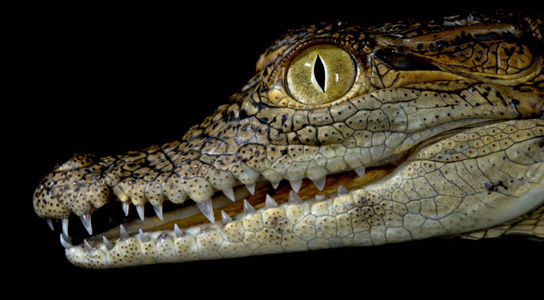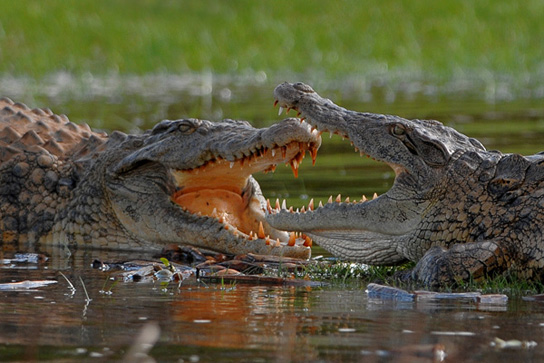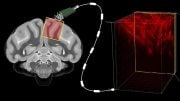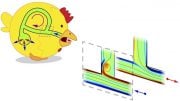
The lines in crocodiles’ faces are cracks in their skin, not divisions between scales. Credit: Michel C. Milinkovitch and Adrien Debry
The “scales” on a crocodile’s cranium aren’t really scales, but simple physical cracks rather than developmentally programmed scales that cover the rest of a crocodile’s body. Researchers had previously assumed that the deep lines marked boundaries between scales.
The scientists published their findings in the journal Science. Understanding the physical process by which the cracks form illuminates the biology of the crocodile and allows researchers to track the interplay between physical and genetic forces during embryonic development.

Crocodylus niloticus, Ankarafantsika, Madagascar. Photo by Tommi Sandberg
“This is a completely different mechanism than is normally used in development,” states Michel Milinkovitch, an evolutionary biologist at the University of Geneva in Switzerland, and lead author.
On most reptiles’ bodies, each scale develops from a discrete developmental unit, called a scale primordium. When they are fully developed, the scales generally form symmetrical or regular patterns. Many scales share the same size and shape, and scales on either side of the body or head tend to exactly mirror each other.
While studying other aspects of crocodiles, Milinkovitch noticed that the scales on their heads didn’t have any obvious symmetry. They were of all different sizes and shapes and the chaotic patterns weren’t scales at all.
The team first captured high-resolution photos of every angle of the heads of 15 young Nile crocodiles (Crocodylus niloticus), and created 3D models of their heads. All the details were then removed, except the border between scales. The lines were analyzed using pattern recognition techniques. All of the signatures indicated cracking.
The scientists then followed the embryonic development of crocodiles in nine eggs to see how such patterns would emerge. Scale primordia developed on the bodies of the crocodiles as expected. On their heads, the primordia never appeared and the developmental genes normally upregulated during scale formation remained off. Instead, mounds of thicker skin developed. These structures contain receptors that aid crocodiles in detecting vibrations in the water around them. In late embryonic development, grooves began to appear. The tiny rifts soon grew longer and deeper, branched and interconnected. The patterns of lines were shaped by randomness and placement of the thicker domes.
It’s been hypothesized that this mechanism allows for thick skin to form quickly at the same time as the head is still growing. This research could help scientists understand the formation of fingerprints, which are distinct even among identical twins, as well as the wrinkles or skin cracks that form in adulthood in humans.
Reference: “Crocodile Head Scales Are Not Developmental Units But Emerge from Physical Cracking” by Michel C. Milinkovitch, Liana Manukyan, Adrien Debry, Nicolas Di-Poï, Samuel Martin, Daljit Singh, Dominique Lambert and Matthias Zwicker, 29 November 2012, Science.
DOI: 10.1126/science.1226265









Human cranium has 22 pieces of bones stitched together to form the crown of the head. We don’t open our mouth to such an extent that a crocodile does to swallow its prey. Hence it is natural that embryonic development of the crocodile’s skull gave rise to so many pieces of bones stitched together and its outer skin formed the distinct lines that we see. Thank YOu.